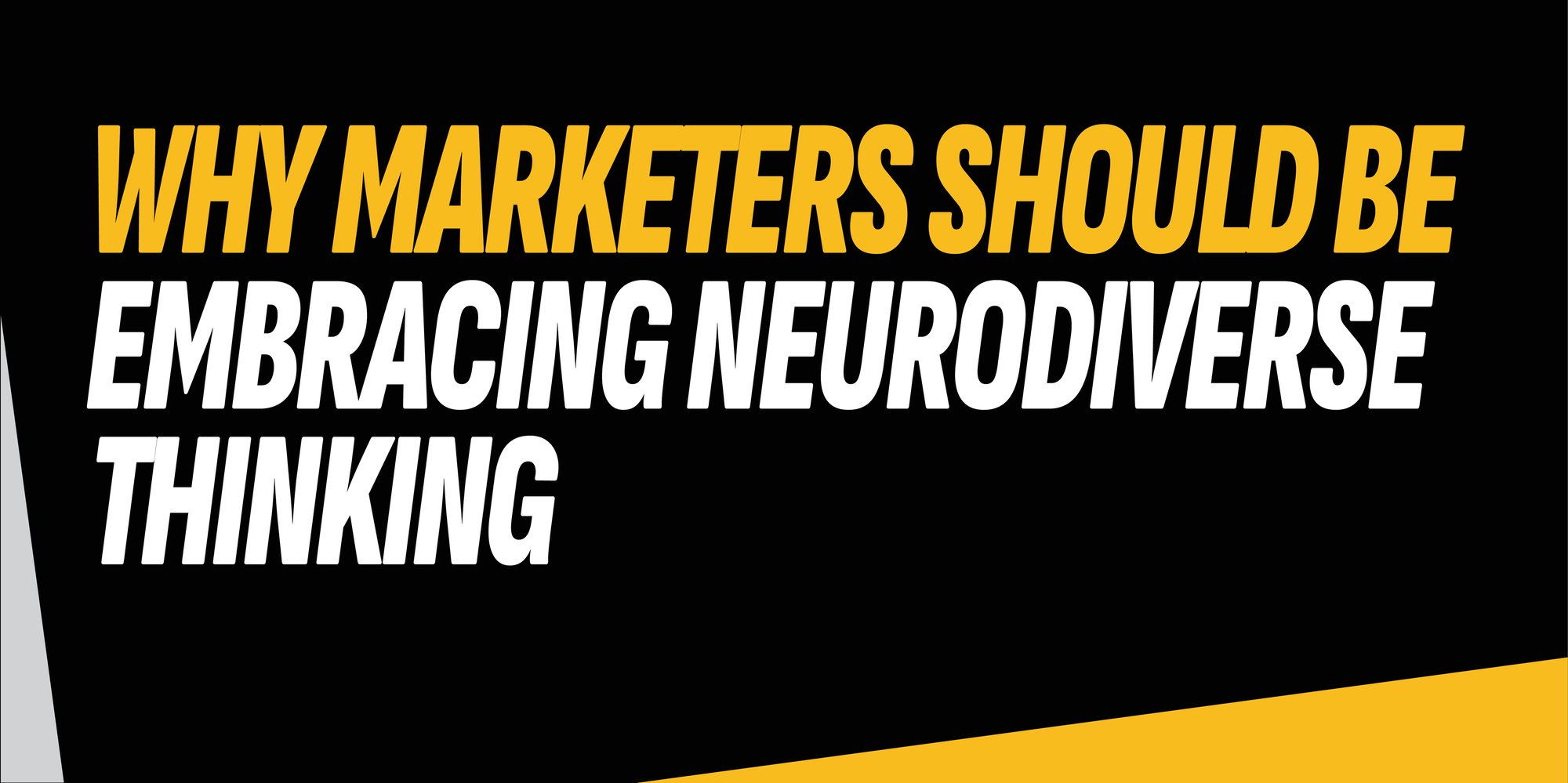Neurodiversity in the workplace

In 2022, LinkedIn made dyslexia a skill you can pin to your profile.
Why? Because while people with dyslexia’s unique brain wiring causes them to face challenges with reading and writing, it also gives them “enhanced abilities” in certain areas including discovery, invention, and creativity. In fact, researchers at the University of Cambridge stated that people with dyslexia “have specific strengths relating to exploring the unknown that have contributed to the successful adaptation and survival of our species.”
So, while differences such as dyslexia, dyspraxia, autism and ADHD have previously been seen as “deficits”, the tide is turning to make way for a new narrative. One in which neurodiversity becomes a key contributor to diversity of thought – the cornerstone of modern marketing.
What is neurodiversity?
Neurodiversity is the umbrella term for a group of developmental conditions that contribute to people seeing and responding to the world differently. There is some debate over what classes as a neurodiverse condition (some researchers are arguing that chronic conditions such as anxiety and depression should also be classed as neurodiverse).
However, the general consensus is that autism, ADHD, dyslexia, dyspraxia (or developmental coordination disorder), dyscalculia, and Tourette’s syndrome all fall under the neurodiverse umbrella.
While many of these conditions contain the word disorder (Autism Spectrum Disorder or ASD), the social model of disability argues that being neurodiverse is not a disorder, it’s a condition. As a result, clinicians and researchers now frequently refer to ASD as Autism Spectrum Condition. The social model of disability also posits that neurodiverse people are only disabled because the society we live in is not designed to accommodate their difference. As a result, there has been an increasing push in recent years for acceptance and understanding of neurodiverse conditions.
Neurodiversity and communications
Unsurprisingly, for conditions that often involve differences in communication (such as ASD), there are significant benefits to having neurodiversity in content marketing. This is because, often, neurodiverse peoples’ different thinking styles can contribute to clearer, more concise communication that speaks to a much broader variety of people.
For example, autistic people may find metaphors and figures of speech unnecessarily confusing. As a result, they’re less likely to use them in their own writing, meaning that their communications can appeal to both neurotypical and other neurodiverse people. On the other hand, people with dyslexia may prefer to use transparent language (words that aren’t riddled with silent letters). This can help to ensure your communications cut the fluff and, again, are easily readable to other individuals with dyslexia.
Considering one in every eight people is neurodiverse in some way, and neurodiverse conditions tend to co-occur in the same individuals, it’s well worth ensuring that your communications are easily accessible to this group of people. But that’s not all; considering the goal of communications is to get your message across as simply and clearly as possible to your whole audience, it is well worth having some neurodiverse people on your team to spot where your messaging is a little on the murky side.
Neurodiversity and marketing
But it’s not just written communications that neurodiverse people can effectively contribute to. Neurodiverse people can also be extremely visual thinkers. Visual thinkers tend to think and imagine in visual pictures, and autistic visual thinkers are particularly adept at connecting these thoughts together to spot patterns and develop innovative solutions. And if all of that sounds like hard work, many neurodiverse people have the ability to do all this in a matter of seconds – because this is the kind of work their brains are wired to do.
This is a particularly valuable skill for marketers because visuals are an essential component of branding, storytelling, and grabbing attention. But visual images are more important for marketing than ever before thanks to the rise of social media marketing through channels such as Instagram and TikTok. But this trend isn’t limited to pictures; videos have also become one of the most powerful ways to reach and engage consumers.
The benefits of neurodiversity of thought
The bottom line is, not everybody absorbs information in the same way. By embracing the diversity of your marketing team, you can also embrace the diversity in your audience. Especially because neurodiverse people tend to communicate better with other neurodiverse people, and neurotypical people tend to communicate better with neurotypical people. In fact, autistic to autistic communication has been found to be far more effective than neurotypical to neurotypical communication.
So, making sure your marketing team contains a diverse array of thinking styles is a much more than altruistic. Instead, it’s about valuing the unique contribution neurodiverse people can bring to your marketing campaign, and ensuring you have their ability to tap into the neurodiverse audience on your side.
In short, neurodiversity is a competitive advantage.
Let’s talk
To find out more about neurodiversity at work and in marketing, and how we can help you embrace your creative side, drop us a message by visiting our contact page, and we’ll be in touch.

What Ofcom’s 2025 Online Nation Report Tells Us About Online Behaviour
Ofcom’s 2025 Online Nation Report reveals how UK online behaviour is changing, from rising screen time and mobile dominance to evolving social media use and AI-assisted search. Discover what’s changed since 2024 and what it means for digital, social and search strategies in 2025.




